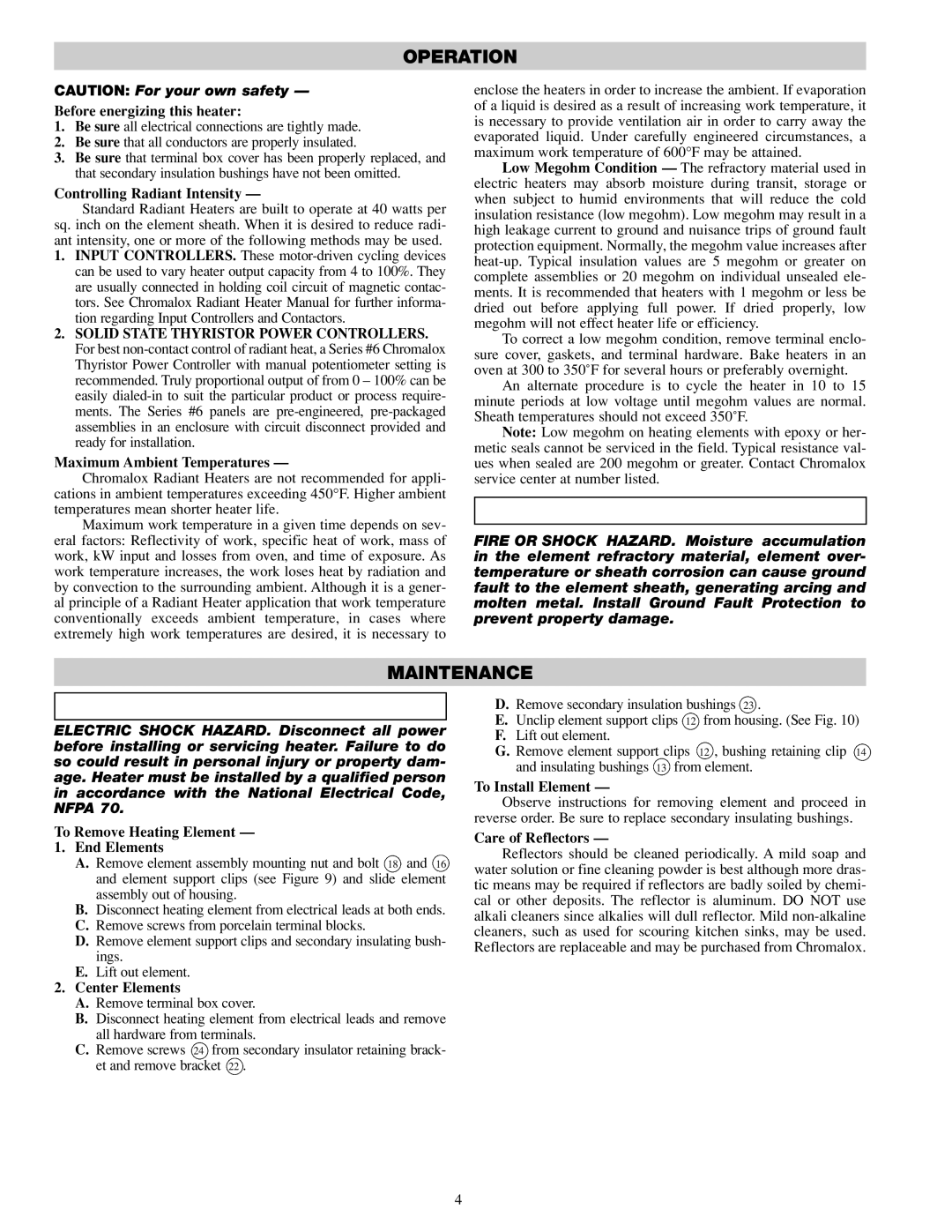DU-RAD-458 6.04 757 specifications
The Chromalox DU-RAD-458 6.04 757 is a cutting-edge heating solution that exemplifies the company’s commitment to innovation and efficiency in industrial heating applications. This model is designed primarily for use in demanding environments where temperature control is paramount. With its robust construction and advanced functionality, it stands out in the market.One of the main features of the DU-RAD-458 is its exceptional temperature regulation capability. It comes equipped with advanced control technologies that ensure precise temperature management. Users can achieve consistent heating across a variety of applications, from industrial processing to laboratory settings. The model's ability to maintain stability even in fluctuating conditions is critical for industries that require stringent temperature adherence.
In addition to its temperature control capabilities, the DU-RAD-458 incorporates energy-efficient technologies that minimize operational costs. The unit is designed to deliver high thermal efficiency, which is essential for reducing energy consumption and lowering greenhouse gas emissions. This is particularly important in today’s eco-conscious market, where companies are continuously searching for ways to enhance their sustainability practices.
Durability is another key characteristic of the DU-RAD-458 6.04 757. Constructed from high-quality materials, it is built to withstand harsh operational environments. Its robust design ensures that it can handle the rigors of industrial use while maintaining peak performance. This reliability translates to lower maintenance needs, allowing companies to focus on productivity rather than frequent repairs or replacements.
The DU-RAD-458 also features a user-friendly interface, making it accessible for operators of varying experience levels. Its intuitive controls streamline operation, ultimately improving workflow and efficiency in high-stakes settings. Additionally, the device supports various networking options, providing flexibility in integration with existing control systems.
Moreover, the unit is designed with safety in mind. Equipped with multiple safety features, including over-temperature protection and alarms, the DU-RAD-458 ensures that personnel and equipment remain protected during operation.
In summary, the Chromalox DU-RAD-458 6.04 757 is an advanced heating solution characterized by precise temperature control, energy efficiency, durability, user-friendly operation, and enhanced safety features. It is a valuable addition to any industrial setting that demands reliability and performance.

